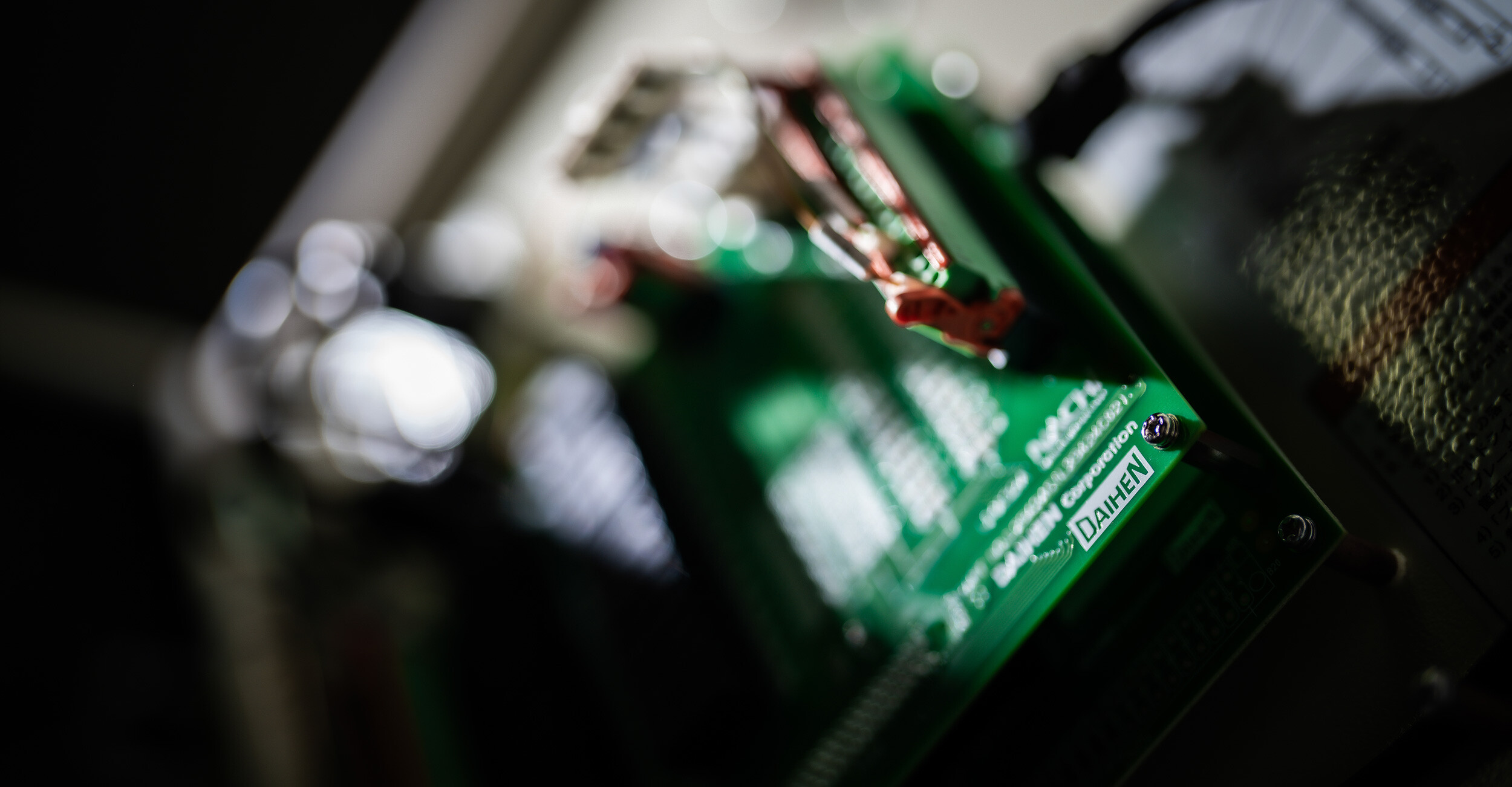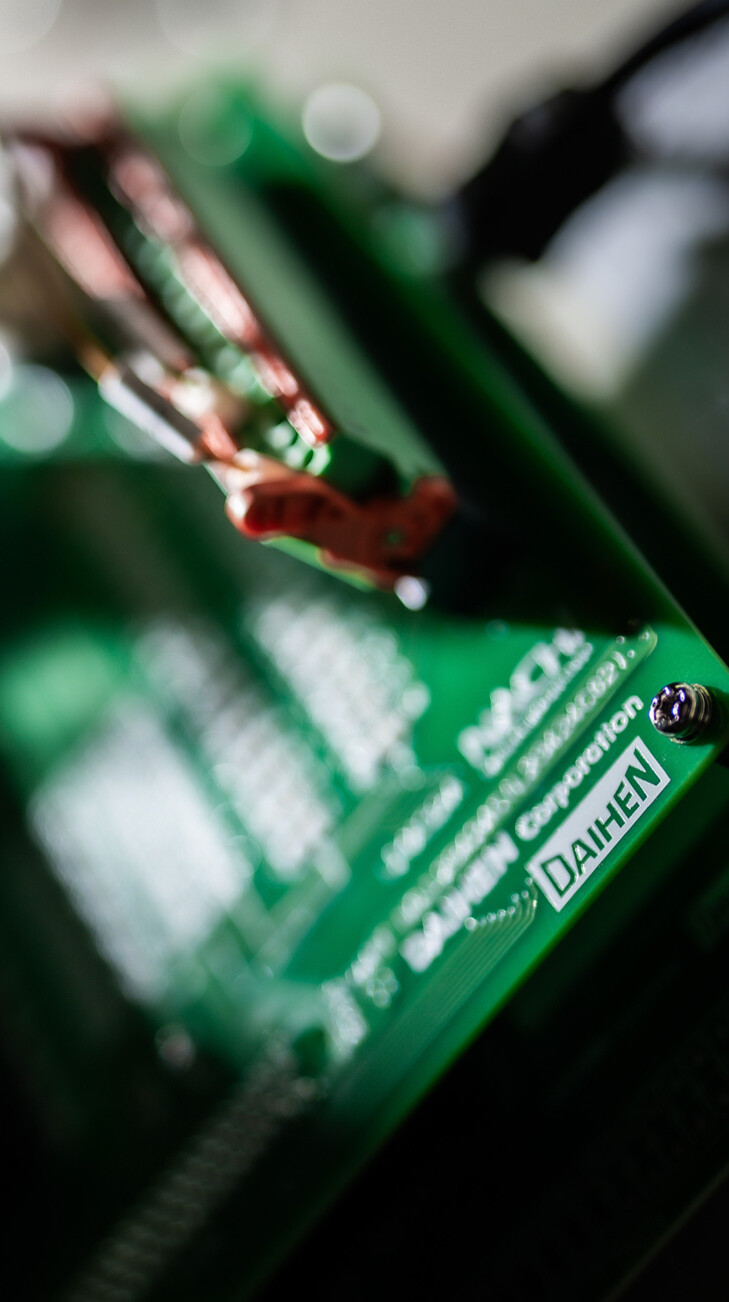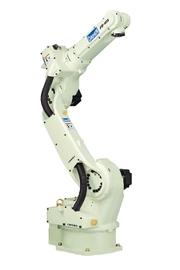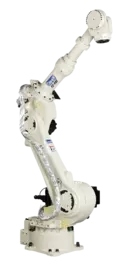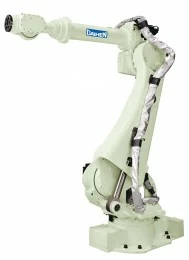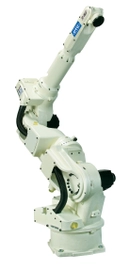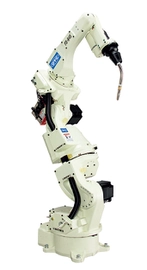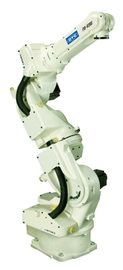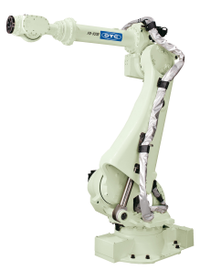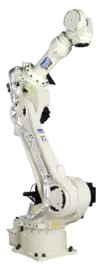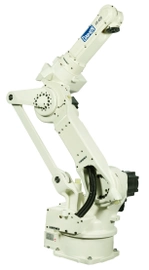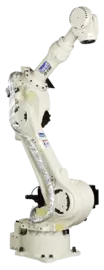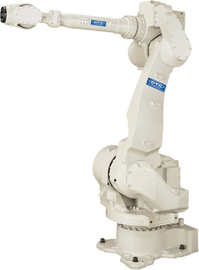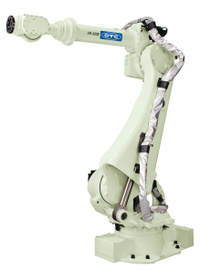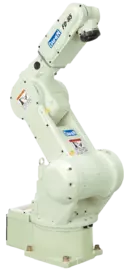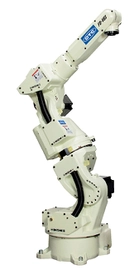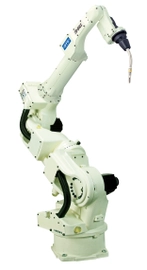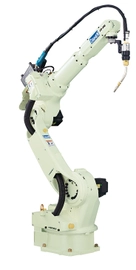Integrate your robot in your network
OUR ROBOT INTERFACES
To ensure an integrated, productive process, plant automation and end-to-end digitization, it is necessary to exchange high-speed information and control data. This is supported from OTC DAIHEN with various hard- and software solutions to integrate our robot easily into your existing network.
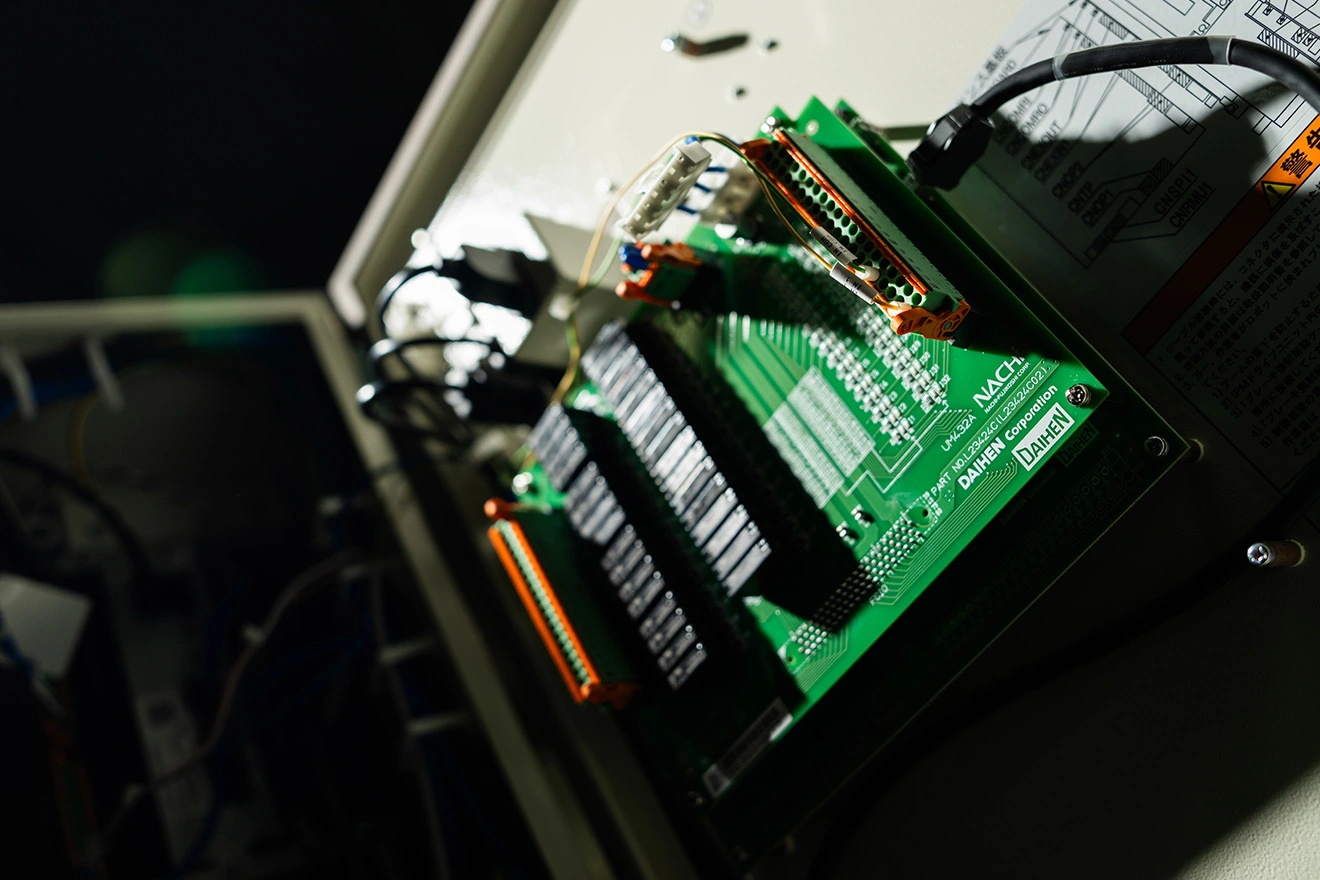
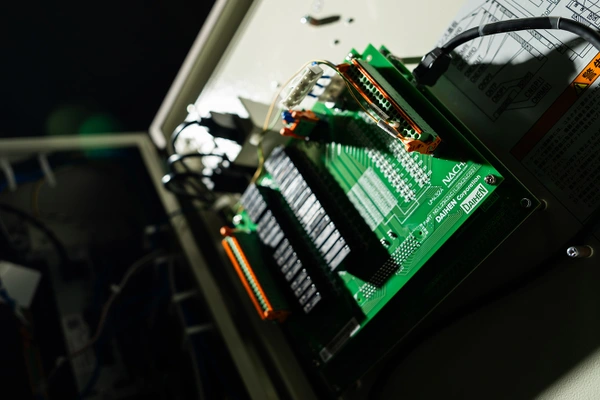
EtherNet/IP
EtherNet/IP is an industrial communication protocol used in automation systems for real-time control and data exchange between devices. It is an open-standard protocol developed by Rockwell Automation and is based on the widely used TCP/IP protocol.
EtherNet/IP uses standard Ethernet communication technology to transfer data between devices, enabling manufacturers to connect and communicate with a wide range of equipment, including sensors, actuators, programmable logic controllers (PLCs), and other devices on the factory floor. It provides real-time, deterministic communication between devices, enabling manufacturers to monitor and control the manufacturing process with high precision and accuracy.
One of the key benefits of EtherNet/IP is its ability to support both cyclic and acyclic communication, allowing for real-time data exchange and on-demand data transfer as needed.
Additionally, it offers a high level of security, ensuring the confidentiality and integrity of the data transmitted within the network.
EtherNet/IP is widely used in various industries such as automotive, food and beverage, pharmaceuticals, and many others. It provides manufacturers with a high-speed and reliable communication protocol that enables them to achieve greater automation, flexibility, and productivity in their production processes.
Overall, EtherNet/IP is a reliable and efficient industrial communication protocol that enables manufacturers to achieve high-performance communication and control in their automation systems.
ProfiNet
ProfiNet is an industrial communication protocol used in automation systems to exchange data between various devices in a production environment. It is a real-time Ethernet-based communication system developed by the PROFIBUS International organization, which is widely used in industrial automation applications.
ProfiNet uses standard Ethernet communication technology to transfer data between devices, enabling manufacturers to connect and communicate with a wide range of equipment, including sensors, actuators, programmable logic controllers (PLCs), and other devices on the factory floor. It provides real-time, deterministic communication between devices, enabling manufacturers to monitor and control the manufacturing process with high precision and accuracy.
One of the key benefits of ProfiNet is its ability to support both cyclic and acyclic communication, allowing for real-time data exchange and on-demand data transfer as needed. Additionally, it offers a high level of security, ensuring the confidentiality and integrity of the data transmitted within the network.
Overall, ProfiNet is a reliable and efficient industrial communication protocol that enables manufacturers to achieve greater automation, flexibility, and productivity in their production processes.
ProfiBus
PROFIBUS is an industrial communication protocol that has been widely used in automation systems since its development in the late 1980s. It is a fieldbus communication system used to connect various industrial devices such as sensors, actuators, drives, and programmable logic controllers (PLCs) to a central controller.
PROFIBUS uses a master-slave architecture, in which a single master device controls and communicates with multiple slave devices. The master device controls the communication process by sending polling messages to the slave devices, which respond with data. PROFIBUS supports both cyclic and acyclic communication, which allows for real-time data exchange and on-demand data transfer as needed.
One of the key advantages of PROFIBUS is its flexibility and adaptability to different industrial applications. It can be used in a wide range of industries, including automotive, food and beverage, chemical, and pharmaceuticals. Additionally, it offers a high level of reliability and fault tolerance, enabling efficient communication even in harsh and noisy industrial environments.
Overall, PROFIBUS is a widely used and well-established industrial communication protocol that has proven to be reliable, flexible, and efficient in connecting various devices in automation systems. However, it is important to note that newer communication protocols such as PROFINET have been developed to offer greater performance and functionality in modern industrial applications.
DeviceNet
DeviceNet is a communication network protocol used in industrial automation systems. It is a part of the family of networks known as the Common Industrial Protocol (CIP) developed by the Open DeviceNet Vendors Association (ODVA).
DeviceNet uses a multi-drop network topology, meaning that multiple devices can be connected to the same network or "trunk" using a single cable. This allows for simplified wiring and reduces the cost of installation and maintenance.
One of the main advantages of DeviceNet is its ability to provide real-time data exchange between devices, enabling high-speed communication and control within an automation system. This is especially important in applications where timing and precision are critical, such as in motion control, robotics, and assembly line production.
DeviceNet uses the Controller Area Network (CAN) protocol for communication, which is a message-based protocol that enables devices to communicate directly with each other without the need for a central computer or controller. This makes it a highly flexible and efficient communication protocol for industrial automation.
DeviceNet also supports plug-and-play installation of devices, making it easy to add or remove devices from the network as needed. It also provides diagnostic and monitoring capabilities, allowing for easy maintenance and troubleshooting of the network and connected devices.
Overall, DeviceNet is a widely used and reliable communication protocol for industrial automation systems, providing high-speed communication, real-time data exchange, and simplified wiring and installation.
CC Link - Control & Communication Link
CC-Link is a popular open-architecture industrial communication network that provides high-speed, deterministic communication between devices in an automation system. It was developed by the Mitsubishi Electric Corporation and is widely used in various industries, including automotive, food and beverage, and pharmaceuticals.
CC-Link is designed to support both cyclic and acyclic communication, providing real-time data exchange and on-demand data transfer as needed. It is a scalable and flexible network that allows for easy integration of new devices and expansion of the network.
One of the key benefits of CC-Link is its high-speed communication capability, with data transfer rates of up to 10Mbps. This enables manufacturers to achieve greater automation and productivity in their production processes, as well as improved product quality and reduced downtime.
CC-Link also offers a high level of reliability and fault tolerance, ensuring the continuous operation of the automation system even in the event of a device failure or network interruption.
In addition to its high-speed communication and reliability, CC-Link also offers a range of advanced features and functions, including remote maintenance and diagnostics, device monitoring, and security features to protect the network from unauthorized access.
Overall, CC-Link is a reliable and efficient industrial communication network that enables manufacturers to achieve high-performance communication and control in their automation systems, ultimately resulting in greater productivity, efficiency, and quality.
RelayUnit
The relay unit is an I/O module (input/output module) and connects binary sensors and actuators with the robot controller. It is used to evaluate sensor signals and to control actuators, e.g. valves.
The I/O communication that can be realised with a relay unit is the simplest form of connecting the robot controller with the periphery.
It is inexpensive and not susceptible to faults but requires a not inconsiderable amount of wiring.
This type of communication has no protocol and no independent detection or correction of transmission errors.
Troubleshooting can also be relatively time-consuming.
A relay unit is limited to a maximum of 32 inputs and 32 outputs.
A maximum of 3 relay units can be installed in a robot controller.
How to select the right communication interface?
Ethernet/IP, PROFINET, PROFIBUS, DeviceNet, and CC-Link are all industrial communication protocols used in industrial automation systems. Here are some of the main differences between them:
Communication method:
Ethernet/IP and PROFINET use Ethernet as their physical layer and TCP/IP as their network protocol.
PROFIBUS and DeviceNet use a serial communication method, with PROFIBUS using RS-485 and DeviceNet using CAN bus.
CC-Link also uses a serial communication method, but it uses a proprietary protocol.
Data transmission speed:
Ethernet/IP and PROFINET can transmit data at very high speeds, up to 1 Gbps.
PROFIBUS and DeviceNet have lower data transmission speeds, typically up to 12 Mbps for PROFIBUS and 500 kbps for DeviceNet.
CC-Link can transmit data at up to 10 Mbps.
Maximum number of devices:
Ethernet/IP and PROFINET can support a large number of devices, up to thousands of devices on a single network.
PROFIBUS and DeviceNet are designed for smaller networks and support up to a few hundred devices.
CC-Link can support up to 64 nodes per network segment.
Functionality:
Ethernet/IP and PROFINET are both very flexible and can support a wide range of applications, from simple to complex.
PROFIBUS is designed primarily for communication between PLCs and field devices, while DeviceNet is designed specifically for connecting sensors and actuators.
CC-Link is designed for high-speed control applications and supports synchronized motion control.
Availability:
Ethernet/IP and PROFINET are widely used in industrial automation systems around the world.
PROFIBUS is commonly used in Europe, while DeviceNet is more commonly used in North America.
CC-Link is most used in Asia, particularly in Japan.
Discover more
